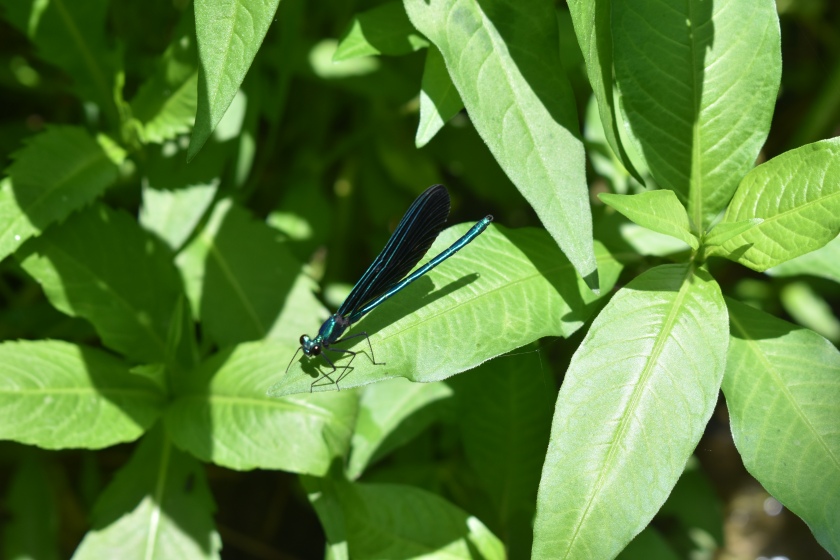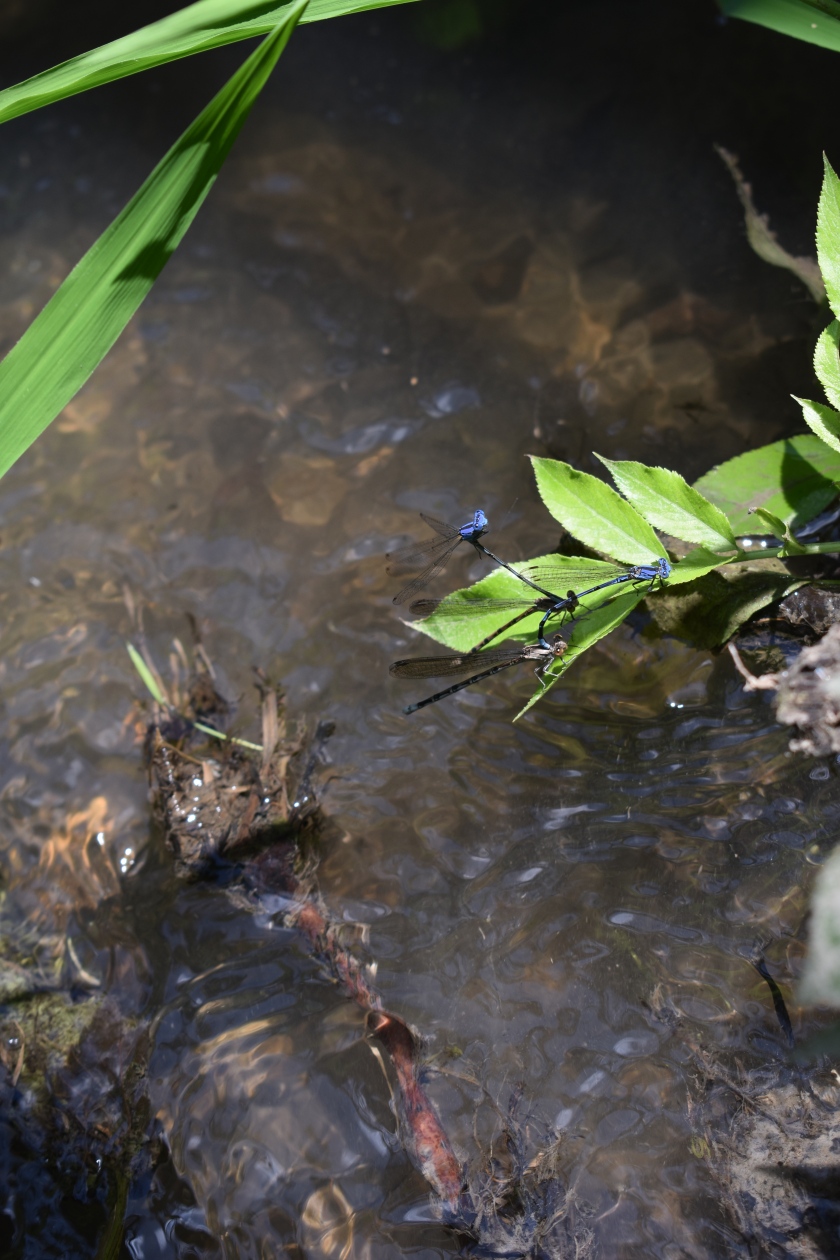 Is it just me, or are there more dragonflies around lately??
Is it just me, or are there more dragonflies around lately??
Quite possibly, this is merely a sign that I’m becoming more aware, and fascinated, by these amazing insects. I owe that awareness to readers of this blog, and to several friends and colleagues who share their knowledge passion with me. I’m convinced that after the fanatical birders and the ardent butterfly enthusiasts, the dragonfly lovers are the next most dedicated animal observers. (Check out IowaOdes or Odonata Central webpages, for example).
One such observer, and successful researcher of the Odonata (Dragonflies and Damselflies) is my colleague at Iowa Lakeside Laboratory field station, Bob Cruden. He’s been associated with Lakeside for decades, probably working there longer than anyone else. I love visiting with him every summer and learning about…just about everything, really. He’s a trained botanist, published expert on insects, and a dedicated academic and conservationist. Recently, he took time to look at photos of dragonflies I spotted at Nelson Park in Crawford County. He kindly identified* two species for me, and remarked that I had encountered one of the most common species in Iowa, and one of the most rare. I believe I also saw a third (related) species.
 Calopteryx maculata, the Black Jewelwing, was abundant and active. The striking, shining blue body and black wings would make a hot-rodder envious of such a body color. The wings flashed at me as the insects surrounded me.
Calopteryx maculata, the Black Jewelwing, was abundant and active. The striking, shining blue body and black wings would make a hot-rodder envious of such a body color. The wings flashed at me as the insects surrounded me.
Calopteryx aequabilis, the River Jewelwing, certainly is photogenic: Bugguide.net has about a million images for your enjoyment. Sorry, I don’t have a great photo of this one.
According to the Iowa Odonata Survey, Argia tibialis, the Blue-Tipped Dancer, is known from 61/99 Iowa counties…although Crawford is not among those listed with a record. Have a look at my photos, including several joined together for a group shot!
 At Nelson Park, I was delighted to find a streamside wetland just upslope of the small constructed lake (reservior). The habitat was a mix of stream channel with various depths, widths, and substrate (sand, gravel, silt) with a mix of herbaceous vegetation and downed woody debris (logs and snags) in the adjacent bottomland floodplain. In a short walk, one can visit dense wooded slope, floodplain wetland with a stream snaking through, the lake, and a mix of physical structure and organisms throughout. Such variety (habitat heterogeneity) is ecologically valuable. Better still, you can enjoy the beauty and learn a little something—there’s an app for that! Ah, the wonders of technology: we live in an age of miracles.
At Nelson Park, I was delighted to find a streamside wetland just upslope of the small constructed lake (reservior). The habitat was a mix of stream channel with various depths, widths, and substrate (sand, gravel, silt) with a mix of herbaceous vegetation and downed woody debris (logs and snags) in the adjacent bottomland floodplain. In a short walk, one can visit dense wooded slope, floodplain wetland with a stream snaking through, the lake, and a mix of physical structure and organisms throughout. Such variety (habitat heterogeneity) is ecologically valuable. Better still, you can enjoy the beauty and learn a little something—there’s an app for that! Ah, the wonders of technology: we live in an age of miracles.
 I was content to just enjoy the dragonflies zooming around me in great numbers. Hovering, diving, racing past and shining in the sun (many are iridescent and brightly-colored). Their beauty and fascinating, lively behavior might explain their great popularity. My inner scientist began to needle me, however. I began to wonder about what these insects need in their habitat. Specifically, I was revisiting the questions I’ve asked lately about the consequences of plant “architecture” on other organisms. Would different sorts Cattails, for example, present different cover in flight or for nymphs swimming in the water? Could eggs be laid as well, or mature nymphs emerge from the water to molt as readily, on different emergent plants? Would water shading or temperature or wave action or litter accumulation affect these animals (or others)? So many questions!
I was content to just enjoy the dragonflies zooming around me in great numbers. Hovering, diving, racing past and shining in the sun (many are iridescent and brightly-colored). Their beauty and fascinating, lively behavior might explain their great popularity. My inner scientist began to needle me, however. I began to wonder about what these insects need in their habitat. Specifically, I was revisiting the questions I’ve asked lately about the consequences of plant “architecture” on other organisms. Would different sorts Cattails, for example, present different cover in flight or for nymphs swimming in the water? Could eggs be laid as well, or mature nymphs emerge from the water to molt as readily, on different emergent plants? Would water shading or temperature or wave action or litter accumulation affect these animals (or others)? So many questions!
In any case, wander the trail and cross the bridge at this wetland, or a wetland near you, and enjoy our lovely Odonata. Perhaps I’ll see you out in one of Iowa’s amazing wetlands!
*Note: I am not a professional photographer, and Bob had to work with my vague descriptions, too. Any mis-ID is on me, surely.

I am always so grateful to the people who put together good online wildlife ID guides for both animals and plants. And special thanks to those who make guides that are very amateur-friendly and/or specific to Iowa and/or the Upper Midwest region that includes Iowa. And more thanks to the generous people who ID photos sent by amateurs. Thank you!
LikeLike
Right with you! It feels like we’re being more collaborative, learning from each other. LOVE IT.
LikeLike